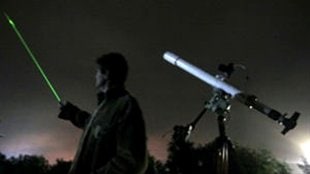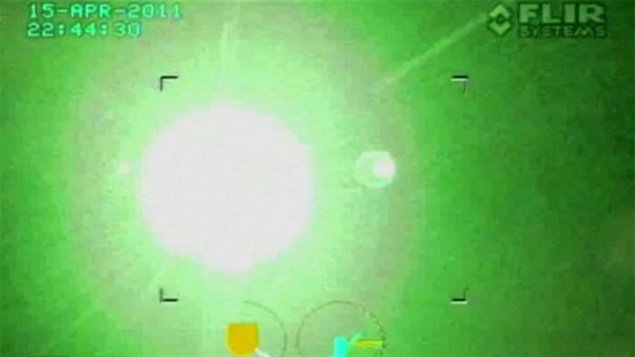Small easily available laser pointers are handy, and inexpensive, but pilots say they can also easily be deadly.
People usually aim such devices at planes at night and on landing approach when they are flying low and relatively slow.
This is also one of the most critical times of flight when pilots are busy setting up for landing, usually with a plane full of passengers and with lots of highly flammable jet fuel left.
Capt. Craig Blanford, is president of the Air Canada Pilots’ Association. He said this week that at best being targetted by a laser is a distraction to pilots and at worst they could lose their night vision when they need it most. Pilots can also suffer eye damage and be grounded.
Transport Canada statistics show a 24-per-cent increase last year in reported laser-pointer strikes against aircraft in Canadian skies — 461 compared to 357 in 2012. There have been 22 incidents so far this year.
The Aeronautics Act already prohibits the targeting of aircraft by laser pointers with maximum penalties of five years in prison and/or a maximum fine of $100,000.
The pilots association wants the offence raised to that of a Criminal Code offence with stricter penalties. They would also like to see greater controls on the sale of laser pointers.
In the US there were almost 4,000 laser strikes last year and there are now rewards of $10,000 for information leading to the arrest of anyone targeting a plane.

Professional and amateur astronomers who often use lasers to point out stars are also very concerned that they will be associated with the problem.
Randall Rosenfeld, chair of the Green Laser Pointer Committee of the Royal Astronomical Society of Canada (RASC),RASC realizes how people might make that association.
“These things are being shone in the air. It’s happening at night…who’s out at night?, he asks.
Noting that the RASC and most other astronomical societies have rules about laser use, RASC Toronto Centre President, Charles Darrow said “All these bad apples ruin it for the good apples, and unfortunately our use of it may get tarnished.”
Meanwhile, authorities note it is very difficult to actually catch any offender given the typical circumstances.
In Canada, the 2009 arrest of an Edmonton man who pointed a laser at a police helicopter is believed to be one of the few cases that’s been publicly reported. In a similar 2011 case in Vancouver where the 31-year-old man said he wasn’t aware of the danger and apologized after being given a five-month conditional sentence.
In 2013 two Edmonton teens were arrested for pointing lasers at a police helicopter, while three males were arrested in another later incident and charged with assault with a weapon, possession of an offensive weapon, endangering the safety of an aircraft in flight, and creating a hazard to aviation safety.







For reasons beyond our control, and for an undetermined period of time, our comment section is now closed. However, our social networks remain open to your contributions.